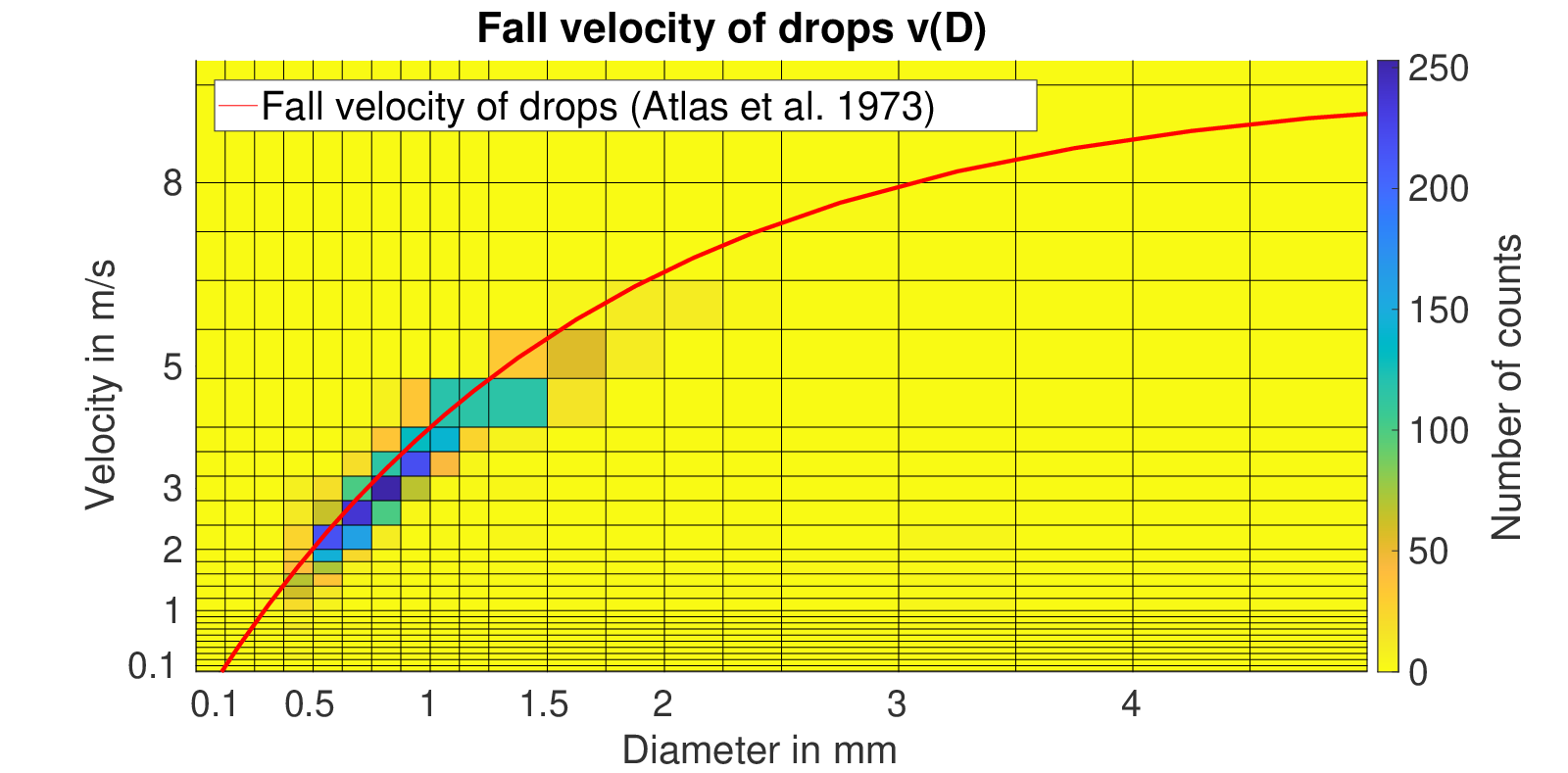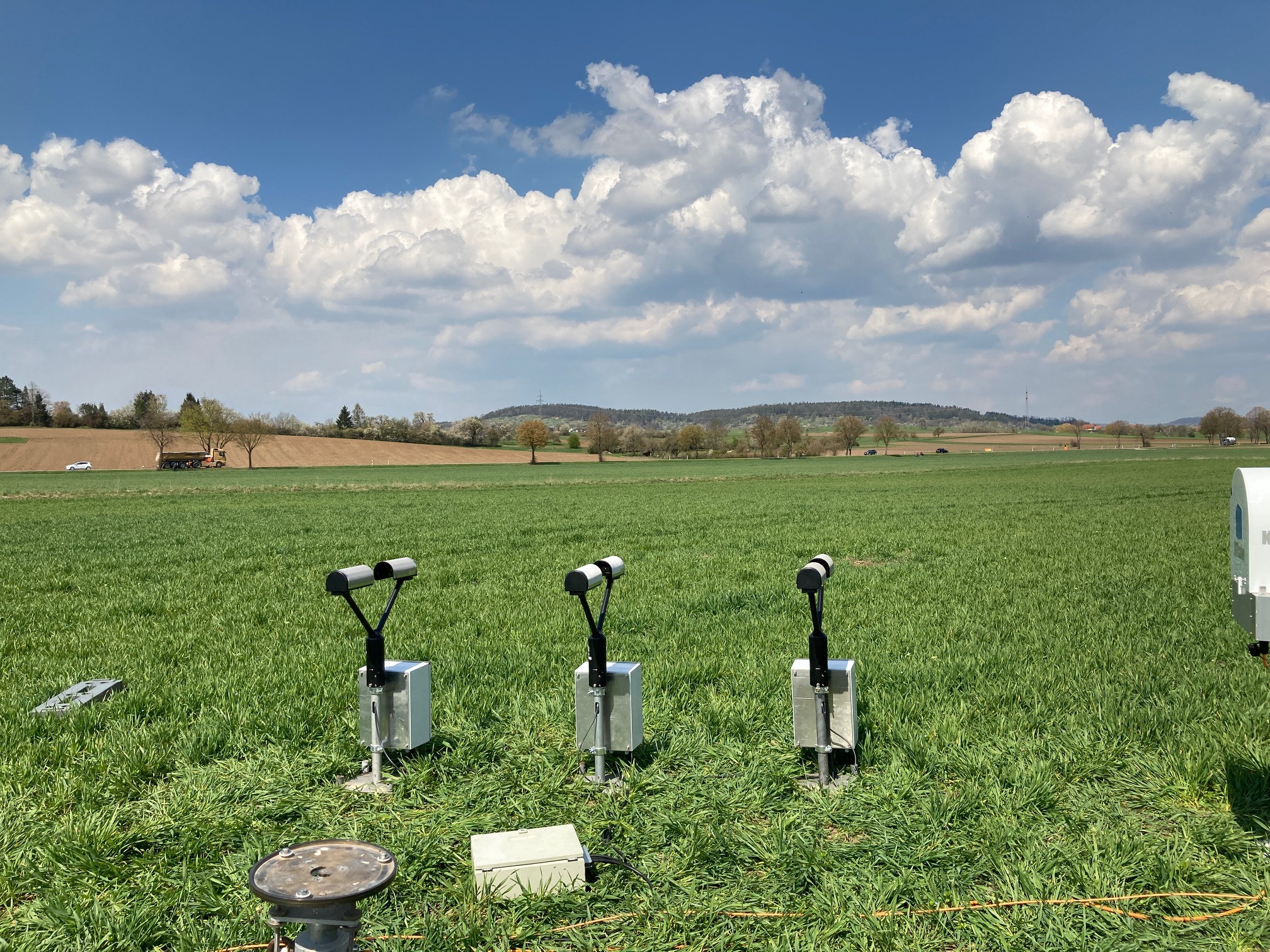Ground based drop size measurements support polarimetric radar
The quantity many users are most interested in cannot be measured by radars: Precipitation intensity ("rain rate"). Radars measure the reflectivity of precipitation, which is only roughly related to rain rate. Particularly when the size of the precipitation particles is unknown, the error is large. Precipitation with large drops (such as showers and thunderstorms) tends to be overestimated, while small-drop rain (drizzle) is underestimated.
The latest precipitation radars therefore use the ability to measure drops in two different polarization directions. The horizontally polarized radar wave measures - in descriptive terms - the width of the drops, while the vertically polarized wave measures their height. Small drops are perfectly spherical. With increasing volume, drops become more and more flat. Thus, an estimate for the average drop size can be derived from the height-to-width ratio.

Traditionally, an improvement of the precipitation measurement by radars is achieved by exploiting the ground measurement network of rain gauges. The precipitation determined by the radar can be adjusted locally at sites where rain gauges are in place.The adjustment factor is then also used in the vicinity.
In order to get additional information from the ground measurement network, which allows checking polarimetric measurement quantities at the ground, IMKTRO has now integrated a network of 23 devices in its KITcube (https://kitcube.kit.edu), which are able not only to determine the total precipitation, but also to measure the size and fall velocity of each precipitation particle. These instruments, marketed under the name Parsivel (for Particle Size and Velocity), were originally developed at IMKTRO. They are currently used for the first time during the Swabian MOSES measurement campaign (https://www.swabianmoses.de, https://www.kit.edu/kit/english/pi_2021_041_from-thunderstorms-to-heavy-rain-and-droughts.php).

Equipped with a solar system and a cell phone modem, the devices operate autonomously and send their measurement data to the KITcube control center once every hour. Since not only the size but also the speed of the precipitation particles is measured, it is also possible to distinguish between rain, graupel, hail and snow. This, too, is attempted to be determined from the polarimetric radar data. The insights from these measurements will improve the quality and reliability of radar derived drop size information.
Working Group: "Land Surfaces and Boundary Layer"
